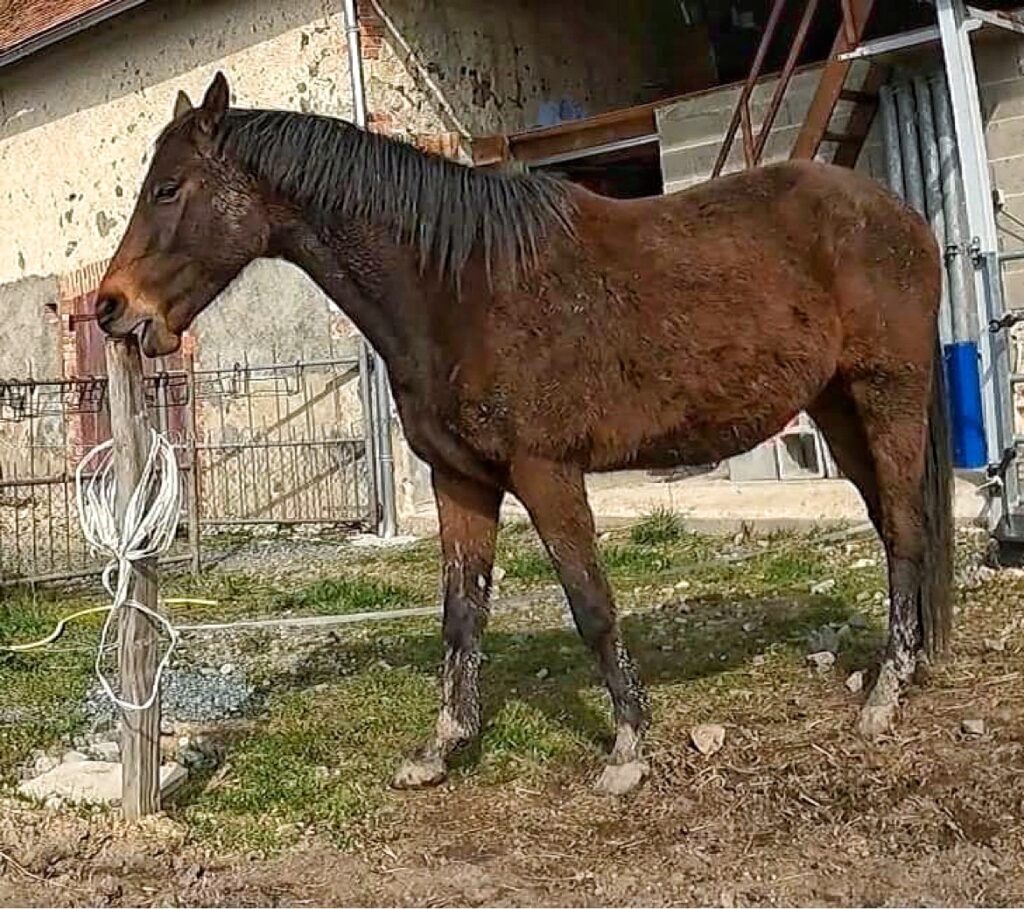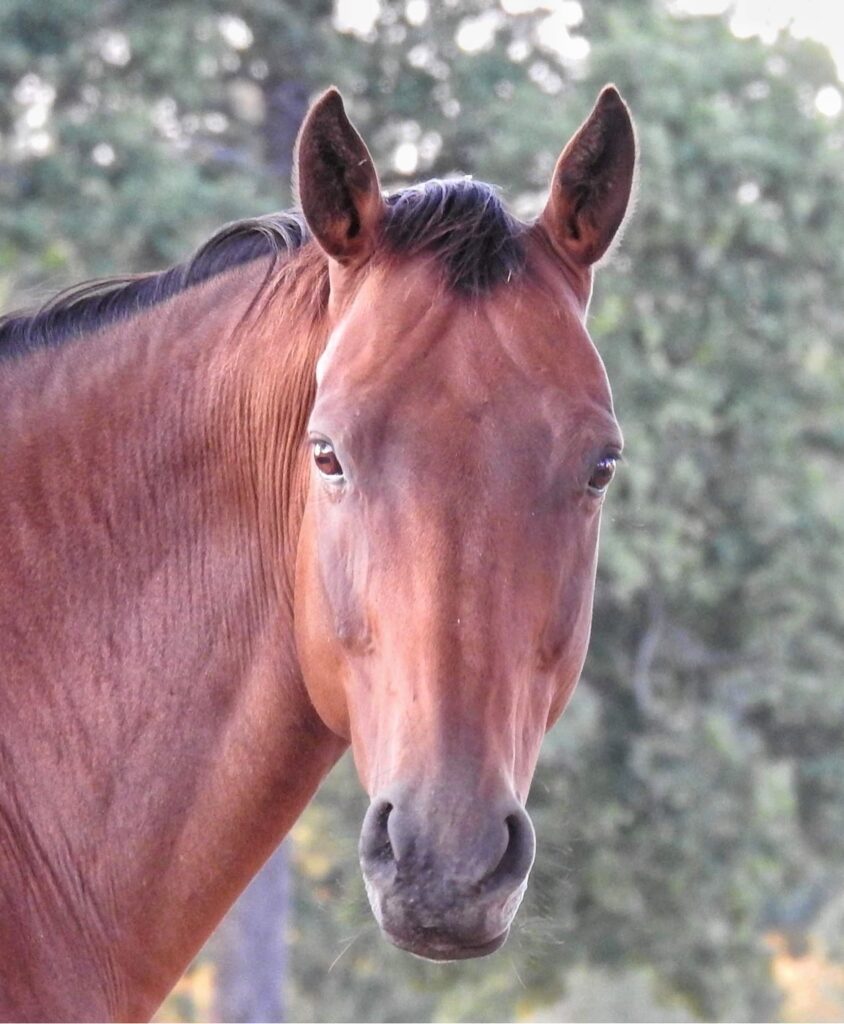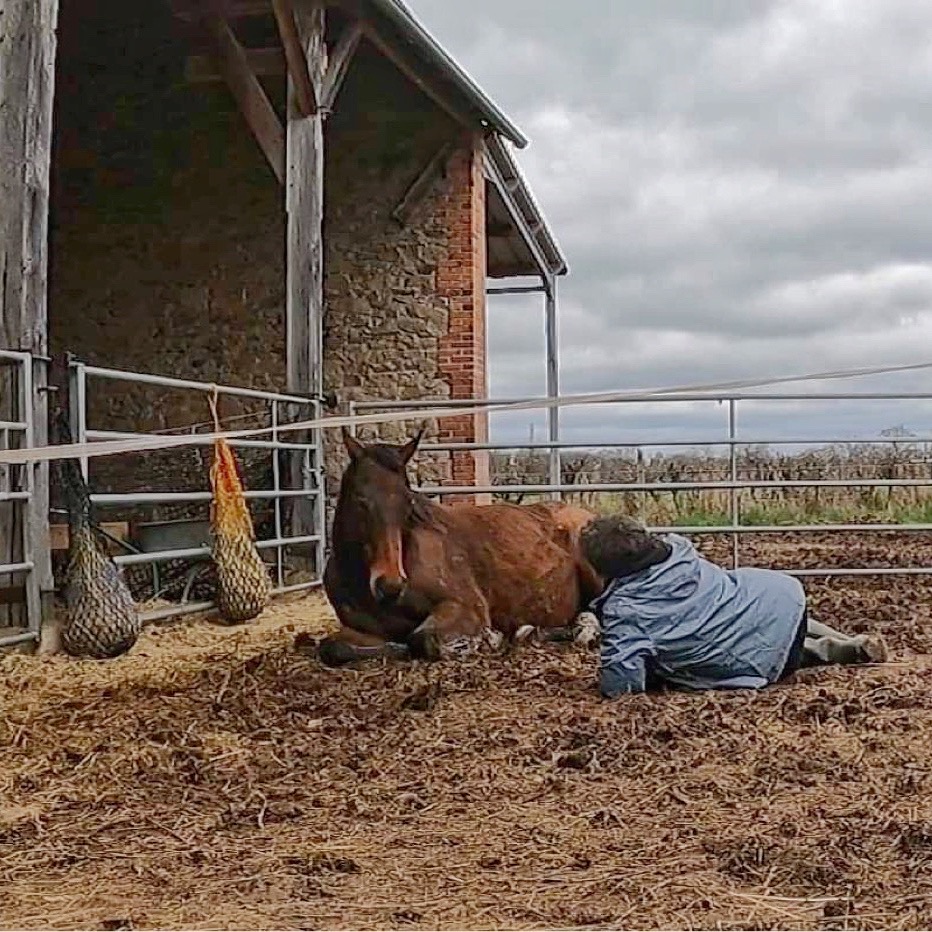A journey into understanding the feeling that can create a cribbing reaction.
Most of us are aware of the physical issues of cribbing and wind-sucking in horses including ulcers, colic, physical imbalances, and loss of teeth, to name a few. We could also spend some time debating all the environmental aspects that may cause cribbing such as early weaning, stabling and the like. But none of these debates or discussions has ever helped me find a way of connecting to Timmy at a level where I could help him help himself.
Timmy’s History with Cribbing

Timmy has been with me since 2011. He cribs and wind-sucks on all available wooden posts, tyres, and even the steel posts that hold up the roof to the horse shelter. There has never seemed to be any reason for this. He cribs after eating a bucket of food, but then he will also stand in a pasture and crib for no apparent reason. He lives out 24/7. He will stand in the horse shelter with his herd companions and crib on the doorway. He has cribbed when I have sat on his back. He cribs on the mares instead of grooming. When I was looking for a ‘reason’ I couldn’t find one.
This led me to ask a number of questions.
- Is cribbing a physiological response to past trauma?
- Is it a response to a deep emotional problem that he can’t let go of?
- Is it psychological?
- Is it physical pain that is relieved through a habitual addiction?
- Can a cribbing horse find peace of mind?
- Can a cribbing horse change the habit?
- Is it all the above?
and so began our journey…
My Journey with Timmy and Cribbing
The first step was to let go of everything I thought I knew about cribbing and windsucking, all the intellectual thinking stuff, all the stuff I had been conditioned to consider. Not because it is wrong, but because it is limiting. It limits the conversation to what I think I know; my opinion of something. It judges the situation within a set of boundaries.
The second step was to change my intention from ‘fixing’ to ‘helping’.
It is not about what I can do to stop him cribbing. It is about how I can help him stop himself cribbing.
This took some time as this was about changing me, changing my perspective, and taking a leap of faith in myself and Timmy. I learnt to just ‘be’ with Timmy whether he was cribbing or not.
By being in the present moment with Timmy at different times I could learn to acknowledge his reactions and responses to different things, without judging them. I could allow him to crib and wind-suck without forming an opinion. Through this I learnt that his cribbing is a reaction to a feeling, but he was not ready to share that feeling with me. He was not ready to be that vulnerable. That was okay as well.
Over many weeks I just spent time with Timmy, being completely in the present with him and listening to him, showing him that I could have complete peace of mind around him and just be there. After a while I started asking him to be with me, to be peaceful in his mind and body, to try and find the stillness required to be completely present.
To be still is to be completely present in the moment.
Timmy struggled with this. I would invite him to be peaceful and present. His reaction was to start to come into the moment and then he would say ‘I can’t’ and start to crib. I would say that was okay and wait for him to stop, and then ask again. This is a repetitive exercise in patience.
Then one day he shared something truly phenomenal with me.

The Freeze Response
I asked him to walk with me into the barn shelter. I walked over the threshold, but he stopped dead, and I felt a sense of terror coming from him. A level of fear I have never felt before in myself. We often say horses are fight or flight animals, but we should never forget the freeze response.The freeze response is the response when fighting or fleeing options are not available. (For more information on trauma responses I can recommend ‘Waking the Tiger : Healing Trauma’ by Peter A Levine). This was the feeling I sensed from Timmy – sheer terror and being unable to move.
I suspect this was the event that triggered the cribbing. When he came out of the freeze he needed to release the feeling of terror and started to crib to soothe himself. Whatever the event was is irrelevant. I will never know absolutely what caused that feeling of terror. The important thing was that he shared the feeling.
When I felt that feeling from him I could not come back into the stillness of the present moment immediately. I had to walk away for a while and process. It was overwhelming. I had to go into myself to make sure I was not holding any trauma that may reflect back to him when we continued to progress. When we share feelings it is important to know what is your own and take responsibility for that feeling, and know what is being shared with you and acknowledge that.
Unravelling the Cribbing Habit

Now we could start to unravel the habit. We know the feeling of terror, but Timmy is not feeling terror every time he cribs. The cribbing was the release of the feeling. What was the feeling? The feeling was one of vulnerability, of having no control over a situation, of having no escape.
How does this relate to the cribbing he does now? I don’t know yet. There will have been many times when this feeling would have come up in him and his response would be to crib.
“Trauma is not what happens to us, but what we hold inside in the absence of an empathetic witness”
— Peter A Levine
When we released the trauma something in Timmy woke up. It was a next level of un-peace, anxiety and frustration showing itself. Now he was starting to communicate and show me why he can’t be peaceful, be still, be present. It is for me to listen, empathise and help Timmy find peace of mind, help him find his way to Now.
The journey continues……
2 thoughts on “Connecting with a Horse that Cribs”
Comments are closed.


Eu estou indo falar para minhas irmãs que leiam seu blog regularmente para ficarem atualizados com as
noticias mais novas!!
Obrigado!